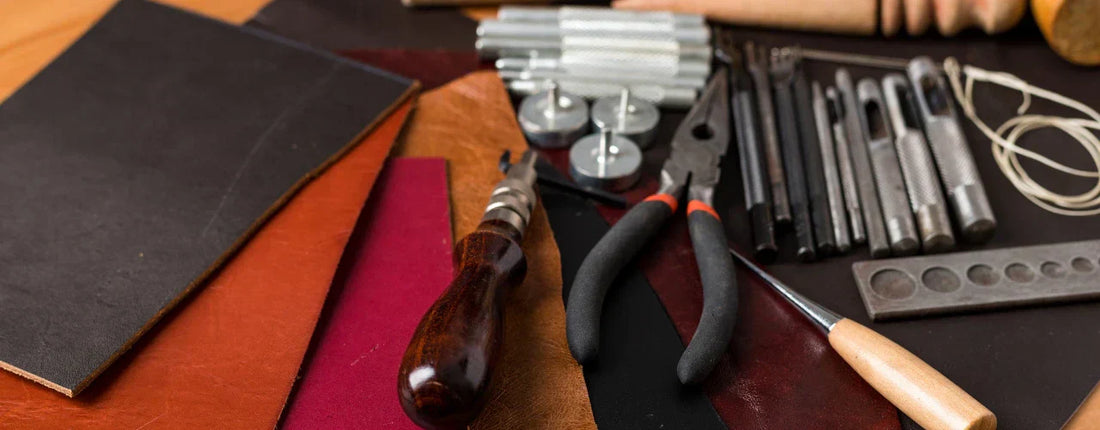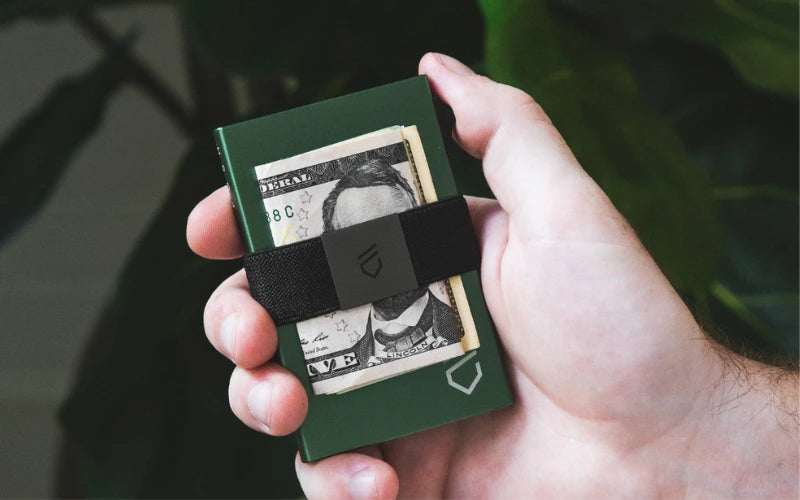
Overview of Wallet Materials: From Leather to Metal Wallets
Share
Since their humble beginnings as simple leather pouches, wallets have gone a long way since their basic beginnings. They have developed into basics that are used on a daily basis, and they are now made from cutting-edge materials such as sleek metals.
By combining durability, style, and utility for today's fast-paced world, wallet materials have evolved to meet changing needs. This journey from classic leather to modern metals demonstrates how wallet materials have adapted to meet changing needs.
When Were Wallets Invented?
Wallets have been around for ages in tandem with the development of human needs and technological advancements. The first known wallets were basic pouches fashioned from fabric or leather that were used to carry cash and other valuables.
These pouches were brought to ancient Greece. Wallets were used for a variety of purposes during the Middle Ages, including the storage of cash, tiny tools, and personal goods. In order to facilitate access, they were frequently fastened to belts.
The usage of paper currency occurred during the Renaissance period, which resulted in the creation of wallets that were specifically meant to hold bills. These wallets had an impact on the form of modern wallets.
As credit cards and digital payment methods became more prevalent in the 20th century, wallets evolved to incorporate features such as card slots in order to accommodate these developments. This progress has resulted in designs that are more specialized and smaller in order to fulfill the requirements of modern life.
History of Metalworking

Metalworking as a lengthy history, and it has been used to shape tools, ornaments, and even wallets in the current era. Its development is a perfect example of human inventiveness and the progression of technology.
Gold, copper, and bronze were the primary materials used by early civilizations such as the Egyptians and the Mesopotamians. These civilizations also developed processes such as hammering and casting.
During the Iron Age, the advent of iron and steel made it possible to create stronger tools and structures. As a result, metalworking became an integral part of the construction industry, the weaponry industry, and everyday life.
Modern breakthroughs in metallurgy have resulted in the creation of materials that are both lightweight and durable, such as titanium and aluminum. These advancements are now being utilized in the production of metal wallets, which combine power and sophistication in their designs.
Metalworking continues to have an impact on contemporary design, providing materials that are both long-lasting and aesthetically pleasing for everyday goods such as wallets.
Metal Fabrication Techniques
Metal wallets are crafted using advanced fabrication techniques that ensure precision and durability. These processes highlight the innovation behind modern wallet designs.
- CNC Machining: Computer-controlled tools cut and shape metal with precision. This allows for intricate designs and smooth finishes.
- Laser Cutting: Focused laser beams cut metal sheets into desired shapes. Ensures accuracy and clean edges.
- Anodizing: Adds a protective oxide layer to the metal surface. Enhances durability and offers a variety of color options.
- Assembly: Metal components are assembled a create secure, functional wallets. Attention to detail ensures proper alignment and usability.
These techniques result in sleek, durable wallets that combine style and functionality.
Leather Wallets vs Metal Wallets
Wallets are essential accessories that balance style with function. Leather and metal wallets remain popular options, each catering to different preferences and lifestyles.
Leather wallets are flexible and resist wear when cared for properly. In contrast, metal wallets, particularly those made from aluminum or stainless steel, excel in resisting scratches and physical damage, making them exceptionally durable.
Aesthetically, leather offers a timeless, classic appeal, often suitable for formal occasions. Metal wallets, on the other hand, feature sleek, modern designs that attract those with minimalist tastes.

Functionality is a key consideration. Leather wallets typically have multiple compartments, making them ideal for carrying cash, cards, and receipts. Metal wallets are compact and focus on essentials, frequently including RFID-blocking technology for added security.
Sustainability matters as well. Vegetable-tanned leather wallets are biodegradable and eco-friendly. Metal wallets are also sustainable, as they are long-lasting and recyclable.
Each type appeals to a specific audience. Leather wallets resonate with professionals and those who value traditional elegance. Metal wallets attract tech-savvy individuals and those who prioritize minimalism and durability.
Leather Tanning Process
The leather tanning process is crucial for transforming raw hides into durable material suitable for wallets. It involves several steps to ensure quality and longevity.
- Preparation: Raw hides are cleaned and soaked to remove impurities. They are trimmed and prepared for tanning.
- Tanning Methods:
Vegetable Tanning: Uses natural tannins from tree bark. Produces leather that ages beautifully, developing a patina.
Chrome Tanning: Uses chromium salts for faster processing. Creates soft, flexible leather with consistent color.
- Finishing: Leather is dyed, conditioned, and treated to enhance durability. Full-grain leather, the highest quality, is used for premium wallets.
Proper tanning ensures that leather wallets remain strong, flexible, and resistant to wear.
Titanium Wallets
Titanium wallets are gaining popularity for their combination of durability and innovative design. They stand out as a lightweight yet strong option for carrying essentials.
- Durability: Titanium is resistant to scratches, corrosion, and impacts. It maintains its strength and appearance over time, making it ideal for daily use.
- Lightweight Design: Despite its strength, titanium is lighter than most other metals. This makes it comfortable to carry without adding bulk.
- Minimalist Appeal: Titanium wallets feature sleek, compact designs focused on holding essentials. They often include elastic bands or clips for card organization.
- RFID Protection: Many titanium wallets offer built-in RFID-blocking technology. This prevents unauthorized access to card information.
- Comparison with Other Metals: Titanium is more durable than aluminum and lighter than stainless steel. It resists corrosion better, ensuring a longer lifespan.
Titanium wallets are perfect for individuals who prioritize durability, security, and minimalist style in their everyday carry.
Leather and Aluminum Wallets From FOSH

The history of wallet materials exhibits a combination of tradition and innovation, spanning from traditional leather designs to more advanced metal forms. In addition to providing durability, style, and usefulness for a wide range of applications, this progression has had an impact on the styles of current wallets.
Taking advantage of these advances, FOSH provides a variety of wallets that are of superior quality and are designed to accommodate contemporary lifestyles. FOSH is the place to go if you want to locate the perfect wallet that combines history and contemporary design.
